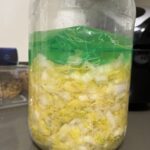Tried and true kimchi recipe for beginners!
Makes about 4.5 lbs of kimchi | 30 minutes of prep | 2.5 hours of inactive prep | 2-3 days of fermenting
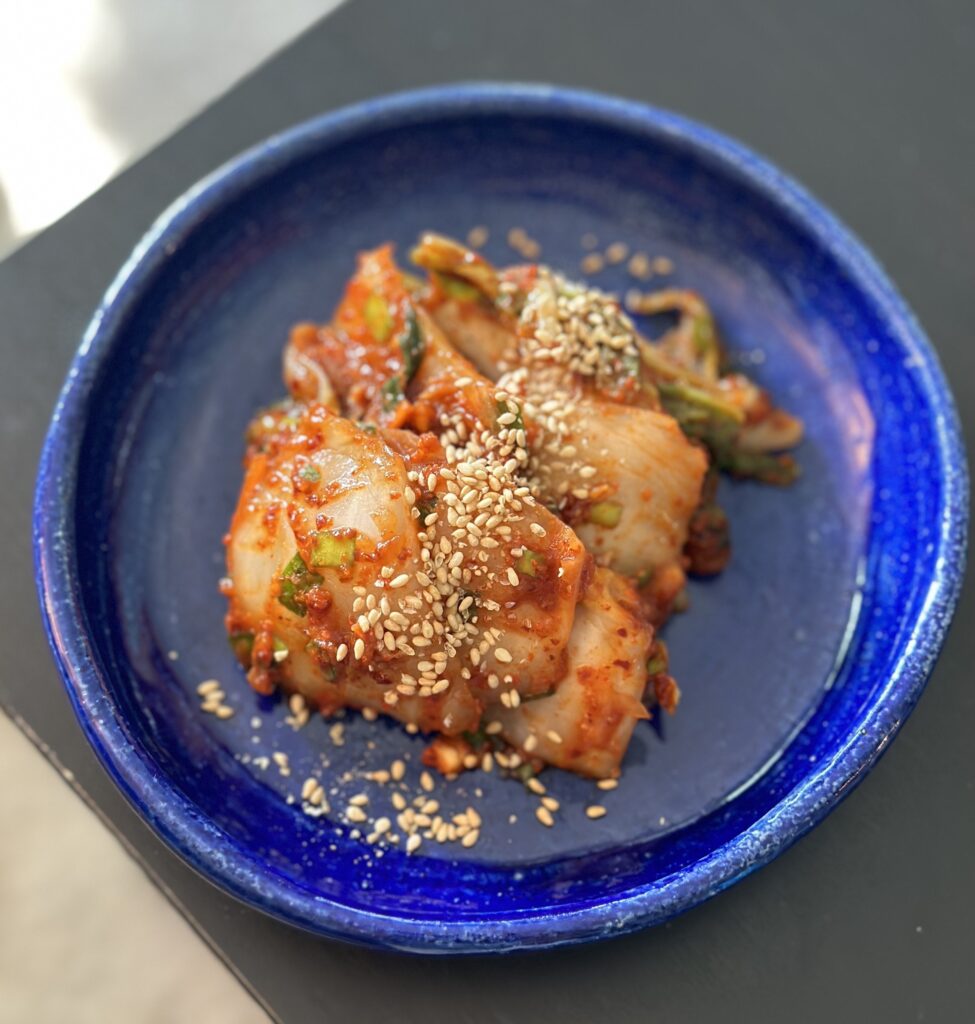
Kimchi is a labor of love. My childhood memories are filled with my grandma and dad making kimchi in all varieties. The traditional napa cabbage kimchi (of course), white kimchi (non-spicy version similar to sauerkraut), eggplant kimchi, cucumber kimchi, etc. Kimchi refers to any pickled or fermented dish; it can be vegetables or even meat and seafood! This is an easy, beginner friendly recipe for the classic spicy marinade we usually think of when we refer to kimchi. Once you’ve mastered this recipe you can customize it with your favorite vegetable or protein pairings and make it as sweet or salty as you prefer. For vegetarians and vegans, you can exclude the fish sauce or buy vegetarian fish sauce to mimic the pungent umami flavors. It certainly won’t be the same but it’ll still be very delicious.
Kimchi usually follows three basic steps:
- Salting the ingredients to release excess liquid and disinfect
- Making a porridge base for the marinade to hold the ingredients and flavor
- Fermenting the ingredients
The fermentation length depends on the temperature and ingredients. The warmer the temperature and the softer the ingredients the faster it will ferment. For example, at 60F, napa cabbage kimchi will ferment in around 3 days. The best way to tell if the kimchi is ready is to simply check it everyday. Once the kimchi smells sour it is ready to enjoy. We then place it into the fridge to slow down the fermenting process.
Let’s get started!
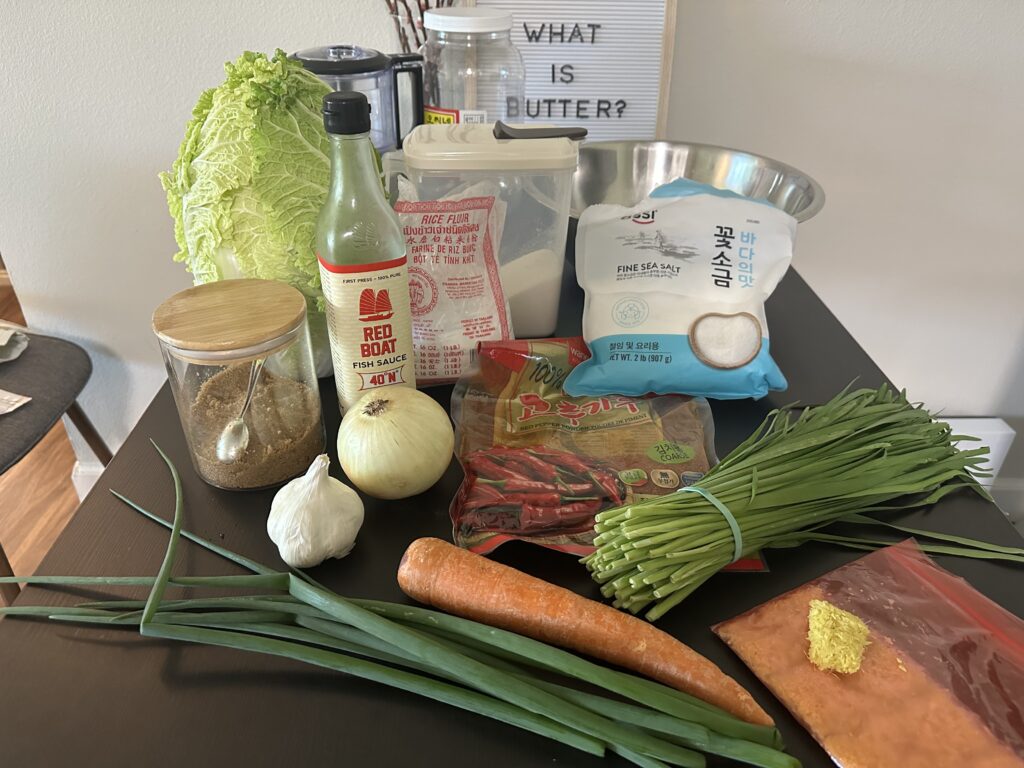
Ingredients
- 1 head of napa cabbage, about 4-5 lbs
- 1/2 cup of fine sea salt
- 1/2 medium yellow onion
- 1 tbsp freshly minced ginger root or 1.5 tbsp frozen minced ginger
- 12 cloves of garlic
- 1.5 cup of filtered water
- 1/4 cup rice flour
- 1 tbsp brown sugar
- 1/8 cup white sugar
- 1 medium carrot
- 20 stems of chinese chives
- 4 spring onion stems
- 1/2 cup fish sauce
- 1 cup coarse Korean red pepper flakes, gochugaru, add another 1/2 cup for a spicier kimchi
Here’s a photo of my two go-to gochugaru brands. Any brand works but make sure to chose coarse red pepper flakes instead of fine powder and buy the freshest one possible. Store the gochugaru in an airtight bag or container because they can grow mold quickly.
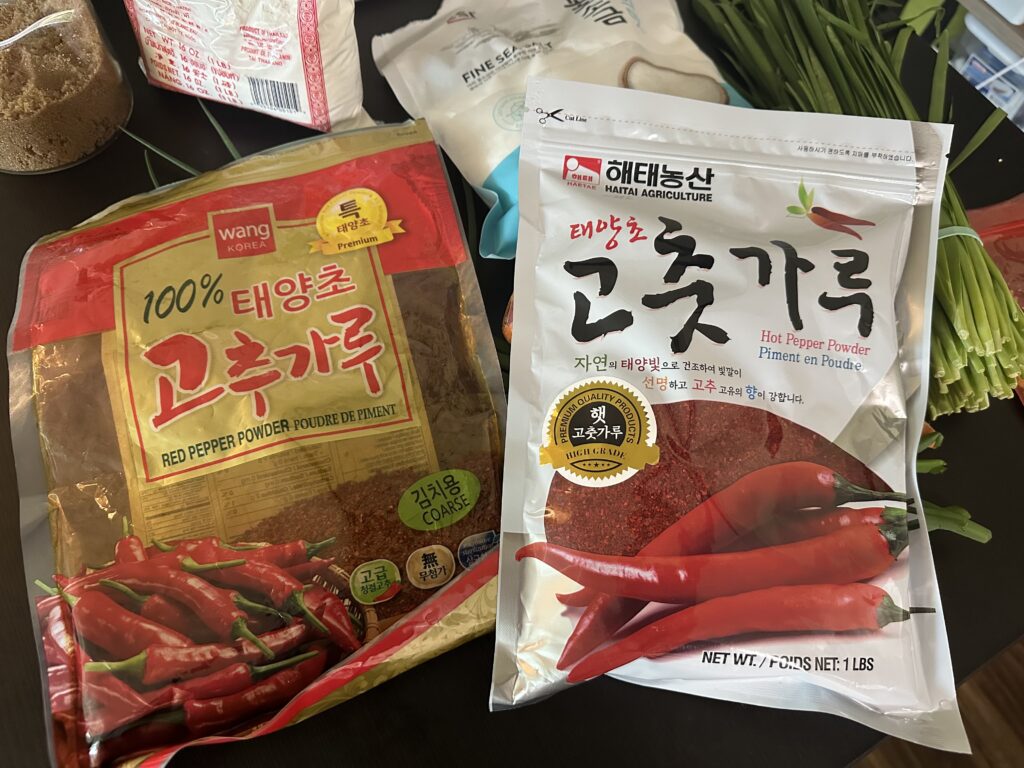

Equipment
- Large bowl or basin for soaking cabbage
- 120 oz very clean large plastic or glass fermentation container (do not use metal! The acid from the kimchi will corrode the metal), alternatively, you can use many smaller containers that add up to 120 oz.
- Food processor, optional but super helpful
- Medium sized sauce pan
- Spatula
- Knife
Steps
- Remove rotten or brown parts of the napa cabbage from the outer leaves. Cut the cabbage into lengthwise quarters by cutting half of the bottom end of the cabbage and ripping it apart with your hands.
- Cut off the tough ends of the cabbage from each quarter length. Then cut the whole length into 2 inch width pieces. Place them into the large basin.


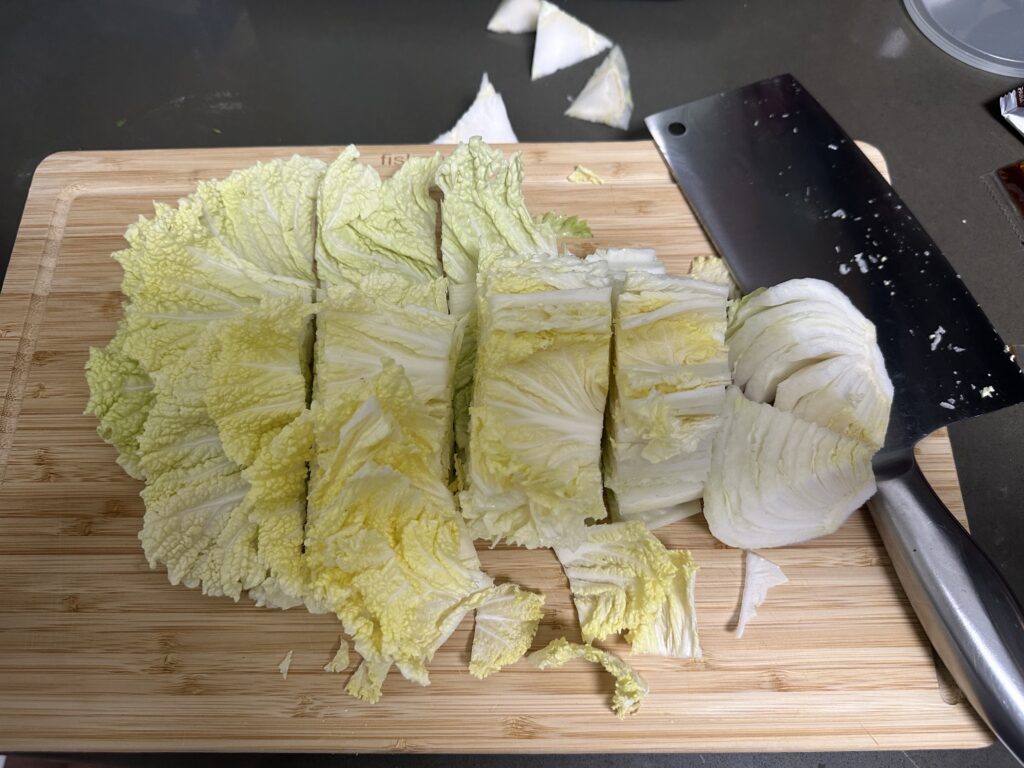
3. Wet the pieces of napa cabbage with cool water. Separate the cabbage pieces into two portions. This will making salting a lot easier. Sprinkle 1/4 cup of the fine sea salt onto half of the cabbage pieces. Rub the salt into them, making sure they are all covered with the salt. Add the remaining half of cabbage slices and 1/4 cup of fine sea salt to finish salting the rest of the cabbage.
4. Let the cabbage pieces sit in the basin for 1.5 hours, mixing every 30 minutes. After 1.5 hours, you would have mixed the cabbage 3 times.
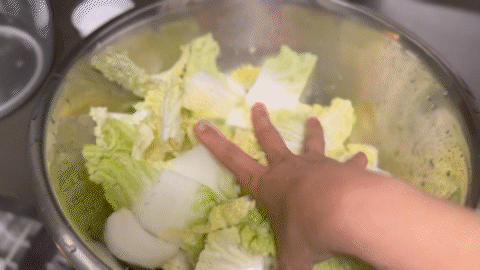
5. While the cabbage is soaking in salt, we will prep the marinade. Combine 1.5 cups of filtered water with 1/4 cup of rice flour in the medium saucepan, making sure no clumps of flour remain. Heat the flour mixture over high heat stirring continuously. The flour mixture will thicken quickly into a porridge in about 3 minutes. Turn the heat to low and once the porridge begins to bubble, add in 1 tbsp of brown sugar and 1/8 cup of white sugar. Continue to stir over low heat for another 1 minute. Remove from the heat and let it cool at room temperature. Once cooled, the porridge will continue to thicken, this is normal.
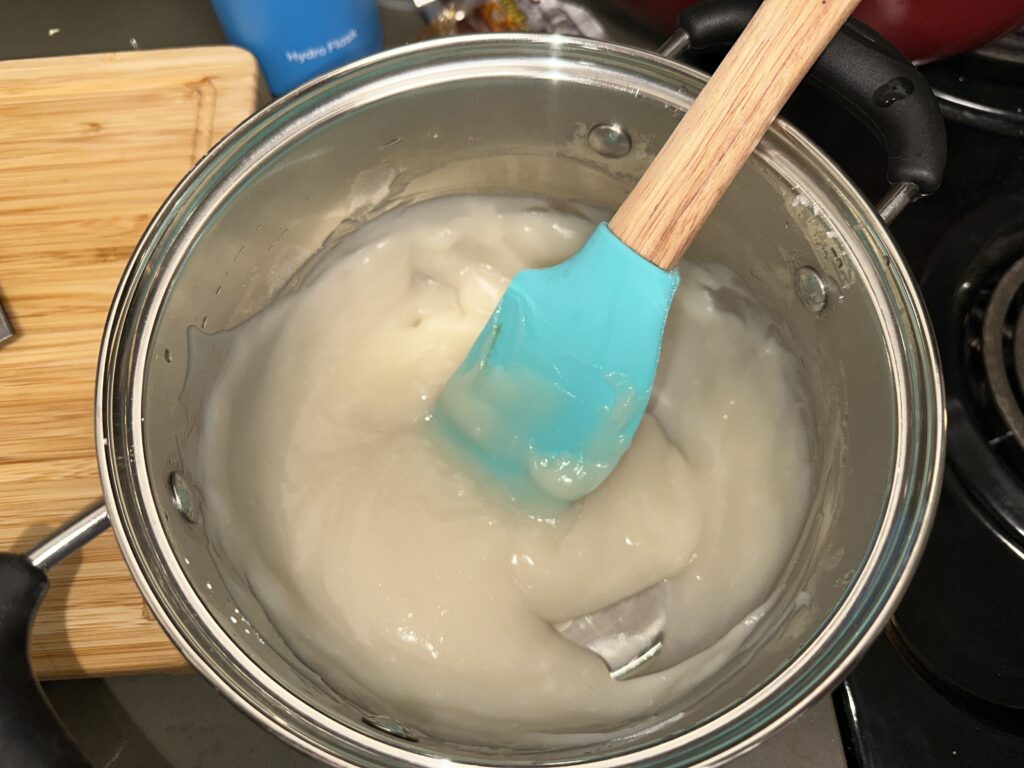
6. Wash and peel the carrot then cut it into 2 inch long matchsticks. Cut the spring onion into 1 inch long pieces. Finely dice the Chinese chives into 1 cm pieces. Place all the cut vegetables into the medium saucepan with the porridge.
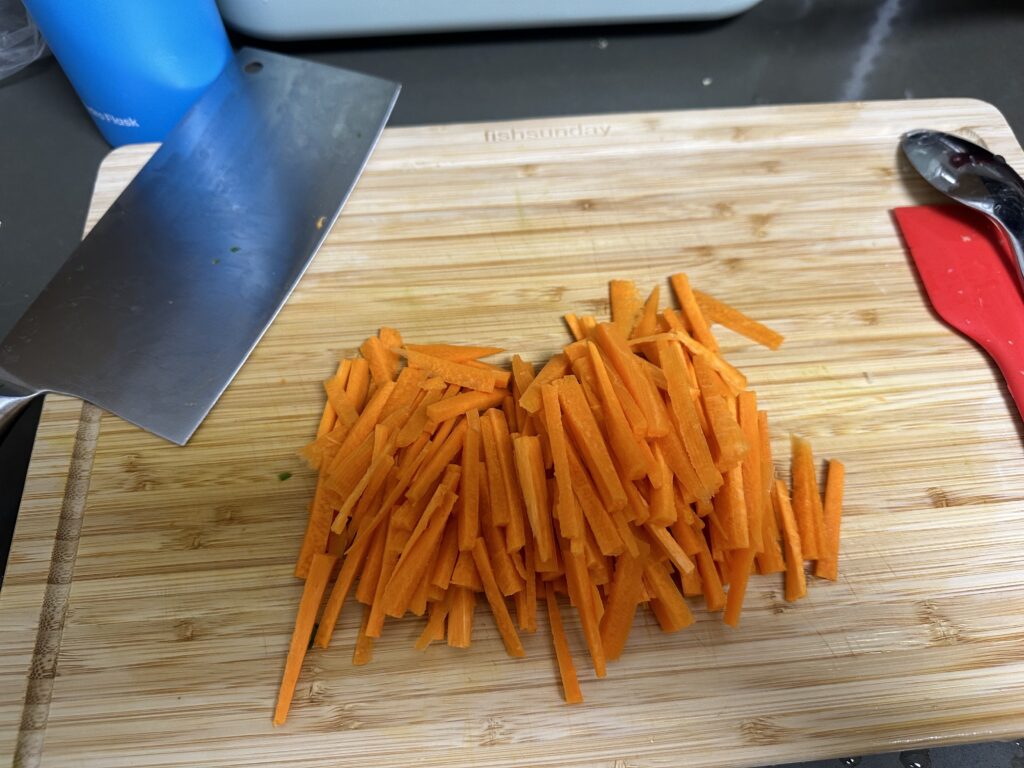
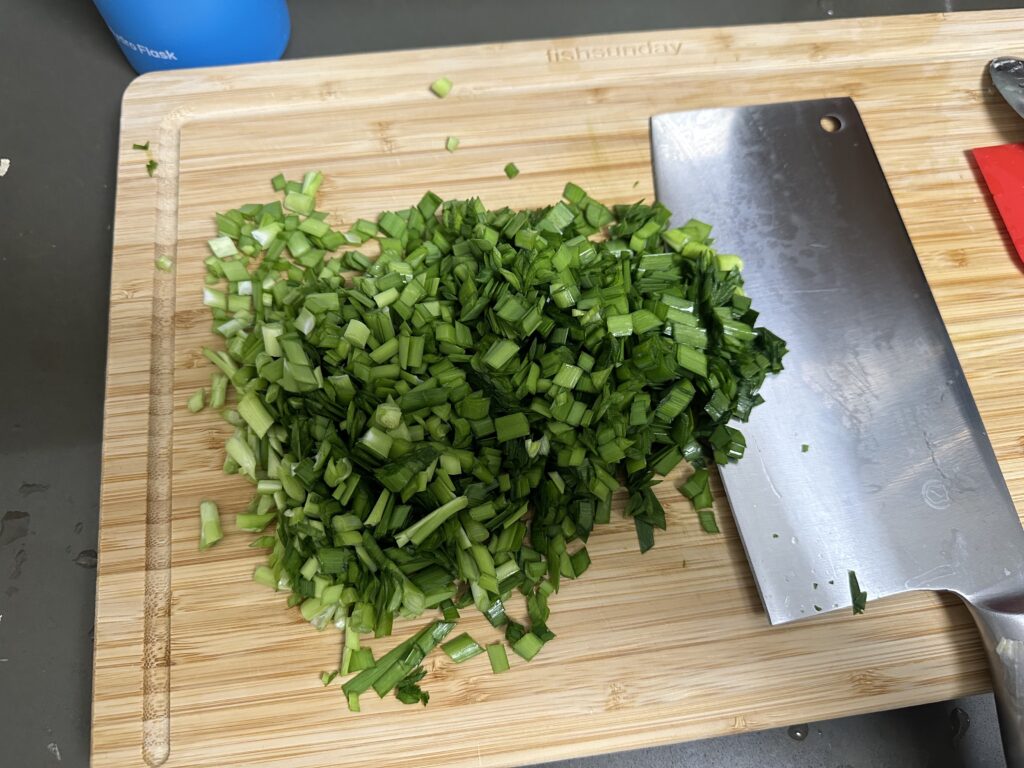
7. In a food processor, purée the onion, ginger, and garlic cloves. Put the purée into the medium saucepan. Add the fish sauce and Korean red pepper flakes or gochugaru into the medium saucepan. Mix everything in the saucepan together.

8. Once the napa has finished 1.5 hours of salting, the volume should’ve shrunk about 30%. Drain the salt water and rinse the cabbage with cool fresh water. Soak the cabbage in fresh water for 30 minutes. Then rinse and soak with fresh water again for another 30 minutes for a total of 1 hour.
9. Drain the cabbage and squeeze out as much water as possible with your hands. Place the squeezed cabbage into the large basin once more. Then add the marinade into the basin and mix the marinade with the napa cabbage.
10. At this point, you can enjoy some of the kimchi non-fermented topped with crushed sesame seeds. They taste great on top of hot fresh rice.
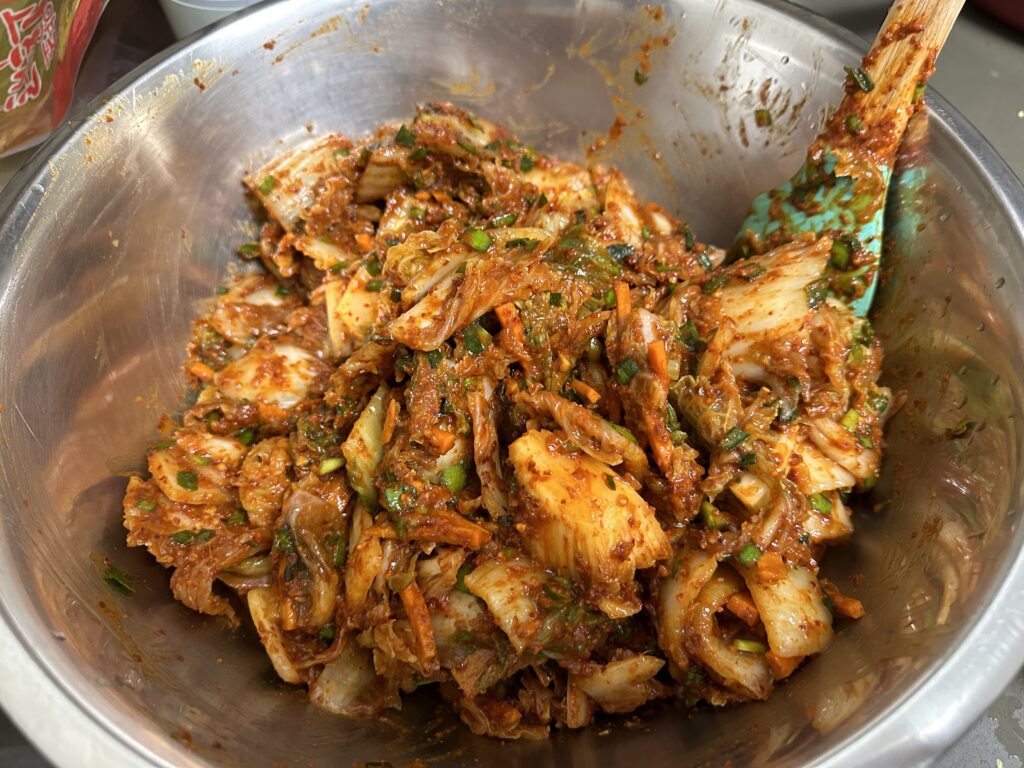
11. Put all the remaining kimchi into the large container. Using a spatula, push out any air bubbles, making sure to pack the kimchi as tightly together as possible. Then using clean hands, wipe off any marinade on the walls of the container to prevent mold growth.
12. Place the container into a dark cool place. Check on the kimchi daily by opening the lid assessing the smell or taste. Immediately close the container after smelling to prevent mold growth. The kimchi should be done within 2-4 days depending on how warm the temperature is. Once the kimchi smells sour, place it into the fridge where it will continue to ferment and become more sour. You can keep it in the fridge for up to a year before the kimchi is too sour and takes on an alcoholic smell.
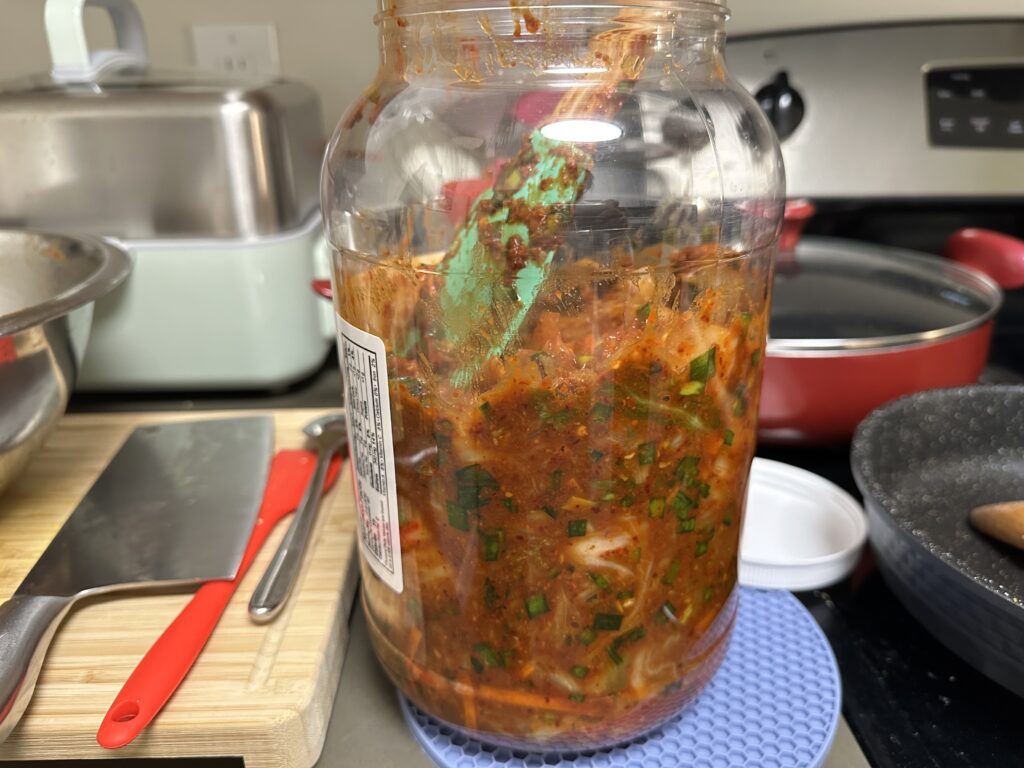
13. Note: There should be no sign of mold growth. Sign of mold means the container was not cleaned properly or the lid was open for too long. Liquid will begin to form as the fermentation process progresses; this is normal and the liquid is great for making kimchi pancakes.

